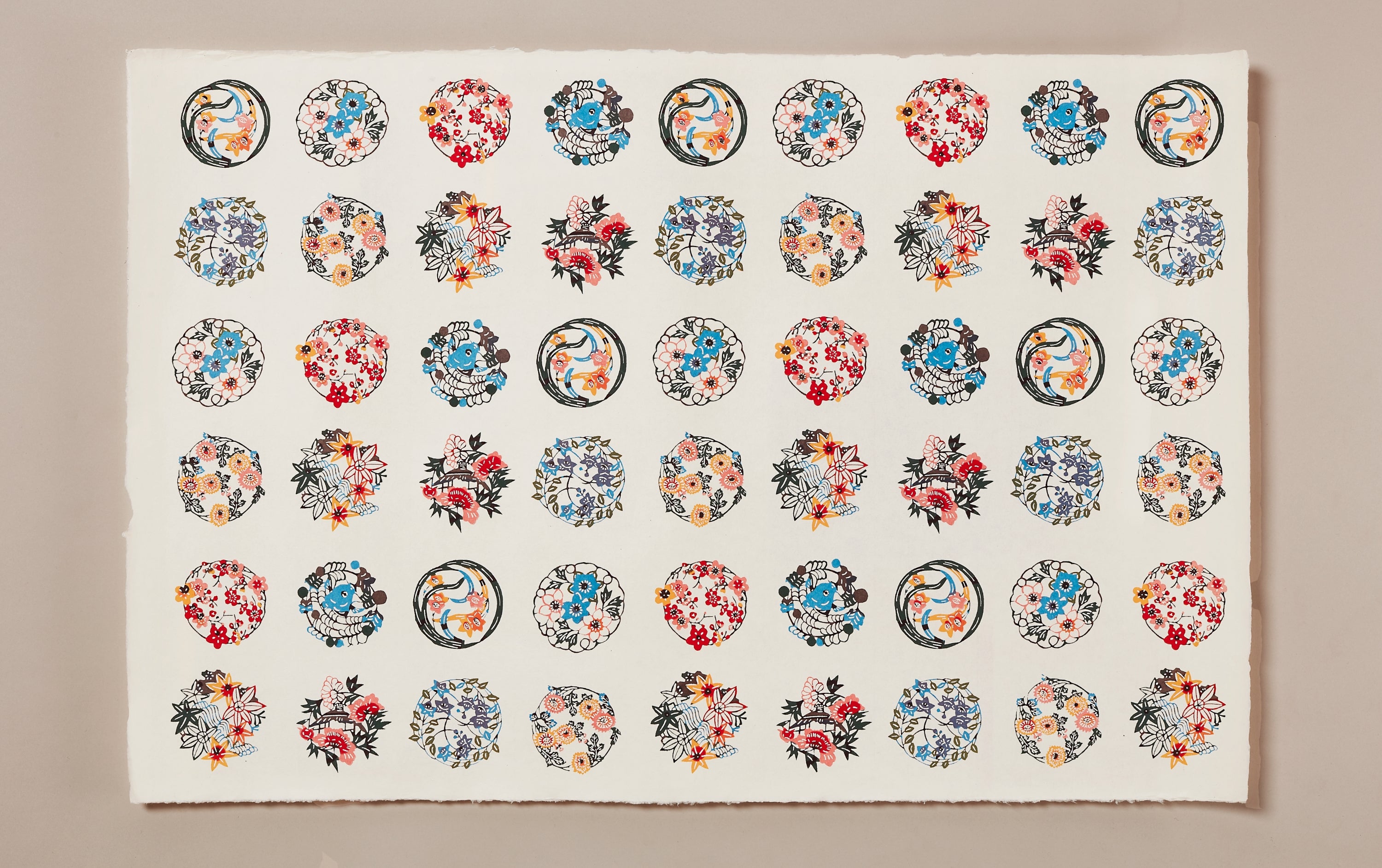Katazome Silk Screen Print, Floral Circles
£18.00
The tradition of dyeing silk fabrics for kimonos featuring beautiful, intricate patterns is centuries old. Katazome and Chiyogami papers are the on-paper continuation of such techniques, which came about surprisingly recently - from the 1940s and 1970s respectively. The production of such papers today remains with a handful of studios primarily situated in the Kyoto region. Originally, these were made from hand-cut paper screens stained with persimmon (also known as kaki) juice; more modern silkscreens are used nowadays.
Whereas in chiyogami printing technique, the pattern covers the entire surface and most often includes gold power for maximum effect, the beauty of katazome lies in a more typically Japanese minimal and restrained approach to aesthetics. Indeed, katazome relies mainly on resist-dyeing (meaning the first layer of printing masks off areas using a glue-like paste made from soy-milk which will eventually be washed off and remain un-dyed) and seeks to reveal the beauty of the handmade paper which lies beneath.
Katazome is directly linked to the work of Keisuke Serizawa (1895-1984), a leader of the Mingei Folk-art movement, designated in 1956 as a living national treasure by the Japanese Government. Serizawa translated dyeing techniques usually used on fabric, in Kimono design, to kozo paper. Only natural dyes from vegetables and minerals are used to obtain matte, subtle and rich colours which can otherwise not be produced in modern printing. Serizawa and a group of stencil artists produced around 400 patterns in the postwar era, a few of which are here presented in our assortment.
The applied katagami stencils are traditionally made from mulberry bark, stiffened with glue and layered with natural fibres such as silk or even human hair. The depicted designs are carved intricately with special knives - indeed, a different knife is required for each of the four different carving styles: tsukibori (push carving), shimabori (stripe carving), kiribori (drill carving), and dogubori (tool punching). The designs are reflective of Japanese cultural symbolism, ranging from flora to fauna, as well as repetitive geometric patterns, as seen in typical indigo shibori dyeing techniques and sashiko embroidery.
Katazome has a distinct postwar modern flavour, melding different stencil dyeing techniques in particular Bingata (from Okinawa) and South Pacific batik. The result is assuredly still very fresh despite its age, which speak volumes to the strength of deceiving simplicity.
Traditionally, chiyogami and katazome papers were used to make small souvenirs and trinkets such as dolls, small boxes, tea caddies etc. These can also be used in a more subtle and contemporary fashion, either framed whole to be used decoratively or for bookbinding where more simple and geometric patterns can look truly stunning and not necessarily traditionally Japanese.
While many retailers sell these papers in half sheets, for your best appreciation we prefer and only sell full sized sheets which measure approximately 66 x 98.5cm.
Details
Paper type: Handmade kozo (mulberry) paper
Print type: Katazome silkscreen print
Dimensions: approximately 66 x 98.5cm.
Images copyright Choosing Keeping; cannot be reproduced without prior permission.





